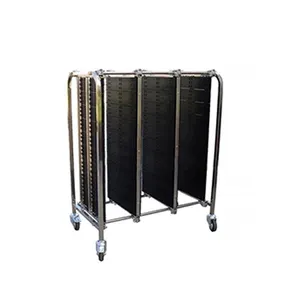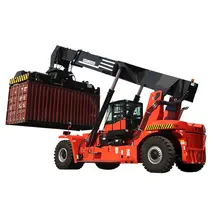Explore the Utility of Antistatic PCB Storage Trolleys
The realm of electronics manufacturing and assembly is replete with challenges, one of which is the safe handling and transportation of printed circuit boards (PCBs). An antistatic PCB storage trolley is designed to address this need, providing a secure and static-free environment for PCBs during storage and movement within a facility. This introduction delves into the various aspects of these specialized trolleys, ensuring that potential buyers understand their construction, functionality, and the value they add to operational workflows.
Design and Material Considerations
The structural integrity of an antistatic PCB storage trolley is paramount, with designs that incorporate robust materials to withstand the rigors of industrial environments. These trolleys are crafted to offer durability while maintaining a lightweight profile, ensuring they are manageable and can support the necessary weight without excess bulk. Materials typically include metals with antistatic coatings or composites that naturally resist electrostatic discharge, safeguarding sensitive electronic components from static damage.
Functional Diversity and Adaptability
Diversity in design allows these trolleys to serve a wide range of applications. From adjustable shelving to modular compartments, the antistatic PCB storage trolley category includes a variety of configurations. This adaptability ensures that they can accommodate different sizes and types of PCBs, making them a versatile addition to any electronics manufacturing setup. The ease of mobility is a critical feature, with wheel designs that facilitate smooth movement across various floor types without compromising the trolley's antistatic properties.
Efficiency and Ergonomic Benefits
Efficiency in the workplace is enhanced with the use of an antistatic PCB storage trolley, designed to streamline the process of moving PCBs. The ergonomic benefits cannot be overstated, as these trolleys reduce the need for manual handling, thereby minimizing the risk of injury and fatigue among workers. The thoughtful placement of handles and the responsive wheel systems contribute to a user-friendly experience, allowing for the effortless transportation of PCBs with minimal effort.
Ensuring Safety and Reliability
Safety is a top priority when handling electronic components, and an antistatic PCB storage trolley is engineered with this in mind. The distribution of weight across the trolley is carefully considered to ensure stability and reliability during use. By evenly dispersing the load, these trolleys not only protect the PCBs but also contribute to a safer working environment by reducing the likelihood of tipping or uneven wear on wheels.
Conclusion
In conclusion, the antistatic PCB storage trolley is an indispensable tool for any operation that requires the safe handling and storage of PCBs. Its thoughtful design, material selection, and functional adaptability make it a smart investment for businesses looking to enhance efficiency and protect their valuable electronic components from static damage. While exploring the various options available, buyers are encouraged to consider their specific needs to find the most suitable trolley variant for their operations.





























 浙公网安备 33010002000092号
浙公网安备 33010002000092号 浙B2-20120091-4
浙B2-20120091-4